TS003
Solo Works
Gilbert Isbin
"Isbin is certainly a creative artist. His work is a mixture of nuances, subtleties, overt statements, and explosive bursts of sound. Although the album is not lengthy, it presents an ample enough dose of Isbin’s talent to cause you to be awed by his prowess."
Frank Rubolino
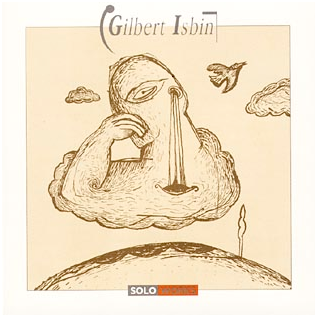
GILBERT ISBIN – SOLO WORKS
1) Speak High
2) Nuances
3) Hioe
4) Joy
5) Signals
6) Heartsong
7) Ogle
8) Toeka
9) Vertical Smile
10) Ballad
11) Clue
12) Glance
13) Ta
All compositions by Gilbert Isbin
Gilbert Isbin: classical guitar, ‘prepared’ classical guitar
recorded at TONESETTERS HOMESTUDIO, Torhout (Belgium), December 10, 1994 and January 14, 1992 by Jos Demol
art work: Jan Pieter Cornelis
SOME REVIEWS:
“Auf seinem Album ‘Solo Works’ drükt Isbin seine Ideen von Free Jazz und Minimalismus auf ungewönliche Weise aus. Während er in die Saiten stöbt, sie kratzt und beigt, bestimmt er doch die Themen durch die variantreiche Auswahl an Klängen, anstelle einzelner Töne, Isbins Intention ist es, in seinen Stücken einen eigenen Klang zu entwickeln und diesen in Dissonanz und Polarythmus zu zersplittern. Innerhalb der einzelnen Nummern stellt Isbin immer wieder seine Fähigkeiten als klassischer Gitarrist unter Beweis, aber seine wahre Kunst ist es sich auf neue Pfade zu begeben und aus seinem instrument Klänge zu entlocken, die selbst in seinem Inneren hört. ”
Jesse Strauch & Carmen Muska in “Jazzlive” #119 (Austria), 1998
“Isbin performs with a vengeance on such an assumedly delicate instrument. Whether performing lush harmonics or practically battering his acoustic guitar into submission, Isbin is not lacking ideas or a sense of purpose. On many tracks, Isbin explores an abundance of motifs and unorthodox approaches while at times extracting unusual or perhaps unimaginable sounds from his ax. Unlike free-improv guitar god Derek Bailey, Isbin carves out thematic passages which almost seem composed yet is prone to detune his guitar or hammer his strings with blazing speed. It is safe to say Isbin stretches matters to the limits of perception and comprehension while twisting his classical guitar into knots as he fervently pusues strange sounds and at times discordant themes. ***_”
Glenn Astarita in “All About Jazz”, October 1999
“Guitariste autodidacte, Isbin ne laisse personne indifférent, bon signe. Esprit curieux, libre de toute attache sur le plan de la technique et de la tradition, il chemine. La liberté de la main droite accompagne le détachement stylistique de la gauche. Sur une guitare classique parfois préparée, il livre ici son ‘state of my art’, dans ses rapports à l’écriture et à l’instrumentation. Les harmonies sur ‘Nuance’, la frappe exubérante de la main droite sur ‘Hioe’ révèlent le lien étroit entre la forme et le titre de chaque composition. ‘Joy’ l’hispanisante nous entraîne du côté de Villa-Lobos. La guitare préparée s’exprime sur ‘Signal’, ‘Ogle’, ‘Toeka’ et ‘Clue’, où l’instrumentation ‘isbienne’ nous offre une guitare désincarnée, fruit d’une approche ludique et de recherches. Isbin est plus qu’un guitariste: un musicien engagé. ”
Philippe Schoonbrood in “Jazzaround” (Belgium), March/April 1997
“Guitare qui sort de son rôle, guitare non plus grattée, mais hurlée, frappée, secouée, guitare torturée, mais par l’amour pour la guitare, pour tout ce qu’elle peut encore livrer à ceux qui l’aiment, loin des canevas éculés; et finalement, guitare qui se retrouve elle-même, loin de la fureur, le temps d’un cri du cœur (Heartsong) ou d’une ‘Ballad’ pensive. C’est tout cela, la guitare selon Gilbert Isbin.”
“Viva La Musica” #191 (Switzerland), April 1997
“Das Spiel des Autodidakten hat Biß und Witz. Der Mann verfügt über eine beträchtliche Intelmigenz. Das Vokabular der modernen Konzertgitarre behersscht der Linkshänder aus dem Eff-Eff, hat es also nicht nötig, mit Virtuosität zu protzen. Ich finde, die unverstärkte Gitarre ist ein undankbares instrument: man hängt sich rein, und doch bleibt das Ding verdammt leise. Der Belgier Isbin holt raus, was rauszuholen ist. Man hört ihm gerne auch länger zu, denn er gibt sich bescheiden und selbstlos. Es geht ihm um die Musik. Ich habe mich keine Sekunde gelangweilt. ”
S. H. in “Bad Alchemy” #30 (Germany)
“Isbin is certainly a creative artist. His work is a mixture of nuances, subtleties, overt statements, and explosive bursts of sound. Although the album is not lengthy, it presents an ample enough dose of Isbin’s talent to cause you to be awed by his prowess.”
Frank Rubolino in “Cadence” (U.S.A.), April 1998
"Etrange musique qu'on ne saurait rattacher à un courant quelconque, ce qui est toujours difficile pour un critique. Quelques phrases rappellent parfois le guitariste Ralph Towner mais c'est très fugace. Finalement, c'est peut-être plus vers des pianistes comme Marilyn Crispell ou alors, pour le côté percussif, chez Cecil Taylor qu'il faut aller chercher. Faisant un usage fréquent d'accordages ouverts dont il est sans doute le seul à connaître les secrets, Isbin distille des sons étranges où cordes frappées, bruits des doigts glissés sur les cordes, polyrythmes et accords savants se mélangent dans des compositions personnelles qui doivent autant à la musique contemporaine qu'au free jazz, à l'improvisation qu'à l'écriture. Le son est évidemment particulièrement important dans cette alchimie : Isbin joue sur une guitare espagnole de marque Cuenca, non amplifiée et sans plectre, faisant usage de tous ses doigts pour des effets très spéciaux. Introspective, on imagine l'oeuvre conçue et enregistrée d'une seule traite dans une pièce sombre et fermée comme un isoloir, peut-être une simple chambre. Et pourtant, de ces musiques atonales d'un autre monde, naît un certain lyrisme, une ambiance bizarre impossible à révéler par l'écriture. Quelque chose qui vient d'ailleurs, un objet sonore non identifié, une musique hantée, et minimaliste selon l'approche d'un Paul Bley, détournée au profit d'un climat d'où l'absurde n'est pas absent. La production est soignée et la pochette, qui reproduit un très beau dessin de Jan Pieter Cornelis, prévient l'auditeur qu'il est aux portes d'un univers qui n'est pas le sien : lequel des deux artistes a bien pu influencer l'autre en premier ? Finalement, il vous faudra écouter ce compact pour vous en faire une idée précise parce que je ne saurais vous en dire plus. Ici plus qu'ailleurs, comme l'écrivait Léon-Paul Fargue, la musique dit des mots de lumière pour lesquels sont faits tous les autres, qui les coiffent de leurs feuilles sombres."
Pierre Dulieu in http://users.skynet.be/sky19290/archives.htm
“The soft, quiet sound of the nylon-stringed jazz guitar has largely limited the instrument to travelogue evocations of Latin America and Spain. Happily, Gilbert Isbin, an unabashed modernist, is here to champion the true potential of this instrument. Isbin, who is self taught, is one of the most unique guitar-stylists I have ever heard. His music defies ready categorisation. Among his influences Isbin cites Paul Bley, Bill Evans, Cecil Taylor, Charles Ives and Marilyn Crispell. Solo Works is his first completely solo release. It features 13 tracks, all composed by Isbin. Because his music defies traditional definitions of song structure, harmony, rhythm, or even guitar playing, it’s hard to tell the written parts from the improvised parts. Isbin brings an astonishing variety of techniques to bear on this instrument. Glissandi, scratches, percussive taps, string snapping, detuning and other les identifiable effects abound punctuated with occasional glimpses of breathtaking virtuosity. Best of all, none of this is forced. The most abstract, least guitaristic passages are engaging, even charming. For all the strangeness and jagged edges, there’s a lot of lyricism here. The unconventional exciting sounds on this CD evade verbal description, for no common vocabulary accurately defines them. But there is some great music on this CD. This is cutting-edge stuff; though the tracks are short and the attitude irreverent. Nevertheless, the music provides accessible listening. This is one of the most exciting guitar CD’s I’ve heard in a long time. I’ll be listening to it a lot and eagerly awaiting Mr. Isbin’s next release.”
Ethan Zames in Planet Jazz (04/1999)
“You will definitely agree with the fact that Belgian jazz is hardly known in Russia. Not too long ago, Ivan Paduart, a pianist, was on a short tour in this country – everybody noticed the guest’s excellent technique and outstanding mastery of improvisation, and his ability to perform standard as well as his own mainstream-style masterpieces to the highest level. And now we introduce to you another Belgian jazzman, the guitarist Gilbert Isbin. He is not mainstream; he plays non-classical music on a classic guitar. He has developed a unique “percussion” technique of sound generation; his manner is extremely dynamic and even jerky – at one moment, his guitar moans and bursts with cascades of sounds, and at another it jingles-taps-rustles, while a special treatment of the instrument fills the music with unusual timbres. If you think that this is something regular, rhythmic and lively, you are wrong. Ibsin belongs to the cohort of spontaneous improvisators – the closest to his style are Derek Bailey and John Russell from England. However, the Belgian jazzman does not follow their style – the total destruction of harmony and melody, and the ecstasy from guitar sounds and tones as they are – you will always find a line to follow in his music. Yet, this line is rather uneven and slips away at every turn: the musician is jumping from one theme to another all the time, from one trick to the following. On the other hand, all of his compositions rest upon a combination of distinct, fixed tricks and tunes, so any kind of chaos is ruled out. We are facing an interesting phenomenon: where music clings to some internal structure within spontaneous improvisation, we see that external effects, such as a play of timbres and unusual sounding, acquire clear meaning and are perceived as something well-organized. I have to admit that while listening to Ibsen, it is hardly possible to find some kind of delay, pure admiration for sound: he tries to fill every piece of music with clear meaning and manages to succeed. The album is listened to in one go and with no lack of interest. It can be recommended to all lovers of free improvisation, as well as to those who are just curious: every unorthodox listener will definitely find something for himself in there.”
Eugene DOLGIKH © 2007 Jazz-Square (Russia) http://www.nestor.minsk.by/
“Isbin is a classical guitarist who performs his own compositions. If early influences from Paul Bley and Bill Evans imply an impressionistic, tonal player, however, nothing could be more inaccurate. Here are pieces full of extended techniques and preparations; Isbin's love of piano music has expanded to include Cecil Taylor and Marilyn Crispell in later years, and it certainly shows.
Isbin has a fiendishly powerful technique; he's able to play fast and loud without falling back on cliche. Working with preparations is easy enough when the style is soft and reflective, but in this energetic, quick-changing music it's almost impossibly difficult, especially in a solo setting. Derek Bailey is one virtuoso who famously expressed a lack of interest in preparations, finding them too unwieldy for his mercurial style; Isbin proves here that it can be done, that exciting and dynamic music can come from the most awkward of modifications.
These pieces can reach apoplectic levels of activity, as on the frenzied and ear-boggling "Ogle". Not everything on this disc has the same headlong rush to it, however, and it comes across as anything but hectoring. Tracks like "Toeka" and "Nuances" are more spacious, and the sequence of thirteen pieces, all fairly short, works as a satisfying whole. Indeed, the sheer variety on this disc can, at first, obscure the consistency of vision which these pieces share; the wild, hammering tachism, the Stepan Rak-like trilling arpeggios, the scrapes and rattles, the Cagean preparations, the percussive sounds, single-note lines and big, dramatic chording.
It's remarkable, then, that Isbin's style manages to remain coherent throughout. Where many classical guitar compositions have been plagued by gimmicky compendia of "new sounds", Isbin has gone far beyond that first flush of novelty, and his compositions work as more than just technical work-outs. In short, Isbin is one of the most enthralling avant-classicists around. He may be one step back from the edge of the envelope, but that just gives him the perspective to make his music as intelligent as it is. Highly recommended to all, and indispensable for guitarists and aficionados of the instrument.”
Richard Cochrane in Musings
In case you LIKE us, please click here:

Foto © Leentje Arnouts
"WAGON JAZZ"
cycle d’interviews réalisées
par Georges Tonla Briquet

our partners:



Hotel-Brasserie
Markt 2 - 8820 TORHOUT
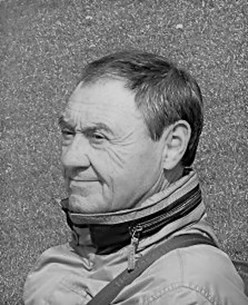
Silvère Mansis
(10.9.1944 - 22.4.2018)
foto © Dirck Brysse
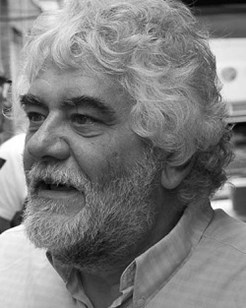
Rik Bevernage
(19.4.1954 - 6.3.2018)
foto © Stefe Jiroflée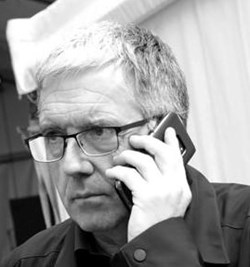
Philippe Schoonbrood
(24.5.1957-30.5.2020)
foto © Dominique Houcmant
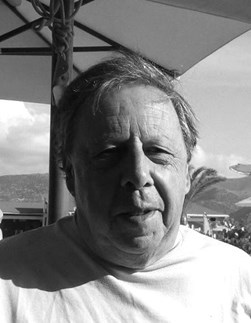
Claude Loxhay
(18/02/1947 – 02/11/2023)
foto © Marie Gilon
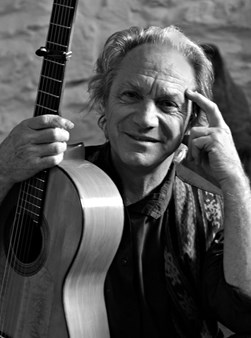
Pedro Soler
(08/06/1938 – 03/08/2024)
foto © Jacky Lepage
Special thanks to our photographers:
Petra Beckers
Ron Beenen
Annie Boedt
Klaas Boelen
Henning Bolte
Serge Braem
Cedric Craps
Luca A. d'Agostino
Christian Deblanc
Philippe De Cleen
Paul De Cloedt
Cindy De Kuyper
Koen Deleu
Ferdinand Dupuis-Panther
Anne Fishburn
Federico Garcia
Jeroen Goddemaer
Robert Hansenne
Serge Heimlich
Dominique Houcmant
Stefe Jiroflée
Herman Klaassen
Philippe Klein
Jos L. Knaepen
Tom Leentjes
Hugo Lefèvre
Jacky Lepage
Olivier Lestoquoit
Eric Malfait
Simas Martinonis
Nina Contini Melis
Anne Panther
France Paquay
Francesca Patella
Quentin Perot
Jean-Jacques Pussiau
Arnold Reyngoudt
Jean Schoubs
Willy Schuyten
Frank Tafuri
Jean-Pierre Tillaert
Tom Vanbesien
Jef Vandebroek
Geert Vandepoele
Guy Van de Poel
Cees van de Ven
Donata van de Ven
Harry van Kesteren
Geert Vanoverschelde
Roger Vantilt
Patrick Van Vlerken
Marie-Anne Ver Eecke
Karine Vergauwen
Frank Verlinden
Jan Vernieuwe
Anders Vranken
Didier Wagner
and to our writers:
Mischa Andriessen
Robin Arends
Marleen Arnouts
Werner Barth
José Bedeur
Henning Bolte
Erik Carrette
Danny De Bock
Denis Desassis
Pierre Dulieu
Ferdinand Dupuis-Panther
Federico Garcia
Paul Godderis
Stephen Godsall
Jean-Pierre Goffin
Claudy Jalet
Chris Joris
Bernard Lefèvre
Mathilde Löffler
Claude Loxhay
Ieva Pakalniškytė
Anne Panther
Etienne Payen
Quentin Perot
Jacques Prouvost
Renato Sclaunich
Yves « JB » Tassin
Herman te Loo
Eric Therer
Georges Tonla Briquet
Henri Vandenberghe
Peter Van De Vijvere
Iwein Van Malderen
Jan Van Stichel
Olivier Verhelst



